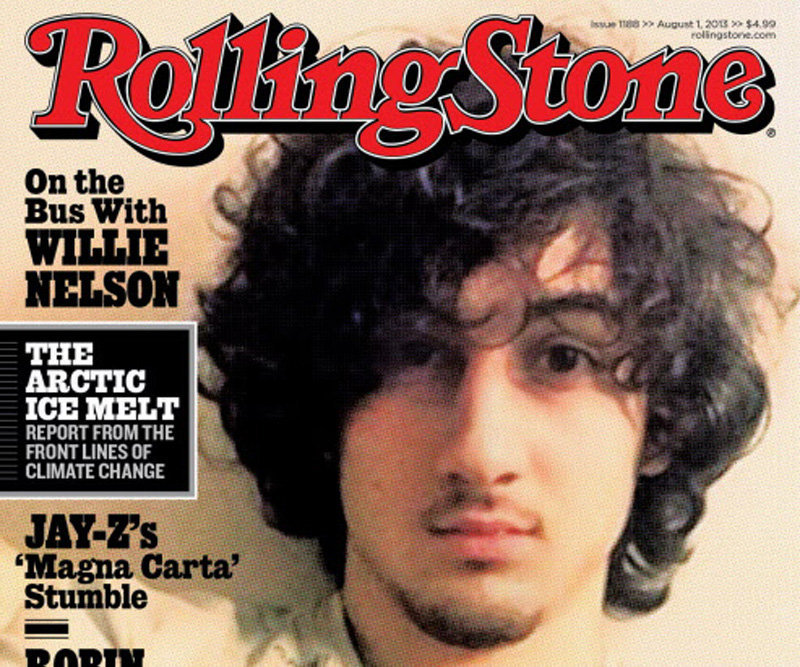Jahar’s World
Janet Reitman | Rolling Stone | July 2013 | 45 minutes (11,415 words)
Janet Reitman is a contributing editor for Rolling Stone.
I was completely unprepared for the response to “Jahar’s World,” which was published in mid-July as a Rolling Stone cover story. The piece tells the story of accused Boston bombing suspect Dzhokhar “Jahar” Tsarnaev, a hip-hop loving, hoodie-wearing, pot smoking 20-year-old from Cambridge, Mass., who is accused of committing the worst act of terrorism on US soil since 9/11. As a character, Jahar was hugely compelling: utterly likable, extremely “normal,” the kid who could have been your dorm mate, or your high school crush, or the stoner down the hall—which he was, to many people. He was also, apparently, capable of murder. I was fascinated by this dichotomy, the absolute normalcy and absolute monstrousness within a single human being, and spent several months exploring it. My editors also explored it in the choice of that issue’s cover image: an undoctored self-portrait of a gorgeous young man accused of committing an absolutely abhorrent crime. I think we all hoped the story would be read and talked about, which is what every magazine writer and editor wants.
What happened was this: Within minutes of my piece being published and posted online, Twitter exploded, followed by a deluge of hate mail sent to the magazine and to me, directly, by people who were furious we had given Tsarnaev that kind of attention. I was attacked for not caring about victims—even though I, myself, lived through the 9/11 attack on New York City, where I live and where a high school friend of mine died in one of those towers. I received hundreds of emails attacking not my journalism, but me, as a human being. On Twitter, one person said I deserved to be raped and killed because of this story, and someone else took it upon himself to hunt down and then post my cell phone number, which resulted in a few dozen scary texts and anonymous calls. I received death threats against myself, and even against my dog. One person wrote me several days in a row saying that he hoped that I, and my entire family, would be killed in a terrorist attack.
For the record, I believe that Rolling Stone did not, as we were accused, “glamorize” a terrorist. We did a very serious story about one, and by putting his face on the cover, we challenged our readers to look him in the face. This was not, as many believed, an air-brushed or otherwise touched up photograph. It was the raw selfie. The photo invited the reader to look at this kid, in all of his beauty, frankly, and when they did that, it made a lot of people extremely uncomfortable, and to be honest, I thought that was great. I thought our cover was fantastic and did exactly what great covers are supposed to do, which is to make people think, read, and discuss. But the outrage it caused was so over-the-top, it not only took me completely by surprise, but made me think very hard about what has happened to our country in the twelve years since 9/11.
Because of this story, Rolling Stone was actually banned—boycotted—by chain stores like Wal-Mart, across the country. They did this on “principle.” What principle? That “knowing our enemies” is somehow wrong? That one of the biggest stories of the year does not belong on a magazine cover simply because the subject, a so-called “bad guy,” is also handsome? Or is it that by covering him at all, giving his story some form of meaning, we were being un-American?
Since 2001, American journalism has been consumed with so-called “War on Terror” coverage, and yet, with a few notable exceptions, much of it hasn’t bothered to examine just who these supposed terrorists are. Why is that? Because we don’t really care? Or, because we might discover, as I did, that the terrorists are not what we expect? It really worries me that as a country we have not only “othered” the so-called terrorists, we’ve refused to grant them humanity. And I think what my story, and our cover, proved is that in some cases, these amorphous “bad guys” look and act, and in many cases are, just like the rest of us. That Jahar Tsanaraev was, by every single account, a very average boy who did a very terrible thing, is not something to reject or be afraid of. It’s something to learn from. That is why we write about the terrorists, it’s why these stories matter.






 Get the Longreads Weekly Email
Get the Longreads Weekly Email